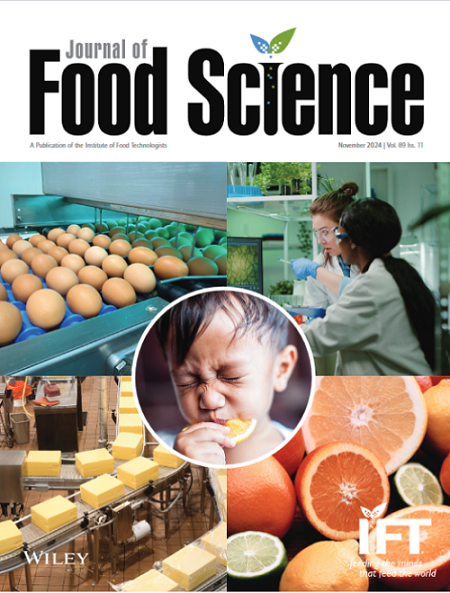Fabrication of novel sodium alginate-based biofoam and evaluation of its packaging cushion performance on banana fruit
Abstract
Mechanical damage during handling and transportation significantly compromises the quality of fresh fruit, highlighting the urgent need for effective cushioning packaging. However, most available cushioning materials are nonbiodegradable, raising environmental concerns. This study aimed to address these issues by developing a novel and eco-friendly cushioning sodium alginate (SA)-based foam, fabricated through a straightforward process combining mechanical foaming and oven drying, with glycerol serving as a plasticizer. The chemical, morphological, thermal, and mechanical properties of the obtained SA-based cushioning foams (SACs) were thoroughly evaluated. The results demonstrated that the SACs exhibited a soft, flexible structure with low densities (12.83–108.39 mg/cm3) and high porosities (90.43%–97.12%), comparable to commercial synthetic foams. Notably, the incorporation of glycerol substantially enhanced the compressive strength and modulus, with the SAC-7.5 achieving improvements of 1280.43% and 1262.12%, respectively, compared to the control. The packaging cushion performance was assessed via drop tests on bananas, where SAC-7.5 provided effective impact protection and maintained key quality attributes of the bananas, including color parameters, weight loss, firmness, and physiological indicators (respiration rate, total soluble solids [TSS], and pH), over 2 days of storage at room temperature. Given its sustainable, nontoxic, and cost-effective production, the developed SAC offers a promising alternative for cushioning packaging in the transportation of fresh fruit.
Practical Application
This study presents an eco-friendly cushioning foam made from sodium alginate (SA), produced through a simple process involving mechanical foaming and oven drying. The resulting foam has comparable cushioning properties to commercial cushioning plastic, offering a possibility for industrial-scale applications as alternative cushioning packaging for fresh fruit transportation.

 求助内容:
求助内容: 应助结果提醒方式:
应助结果提醒方式:


